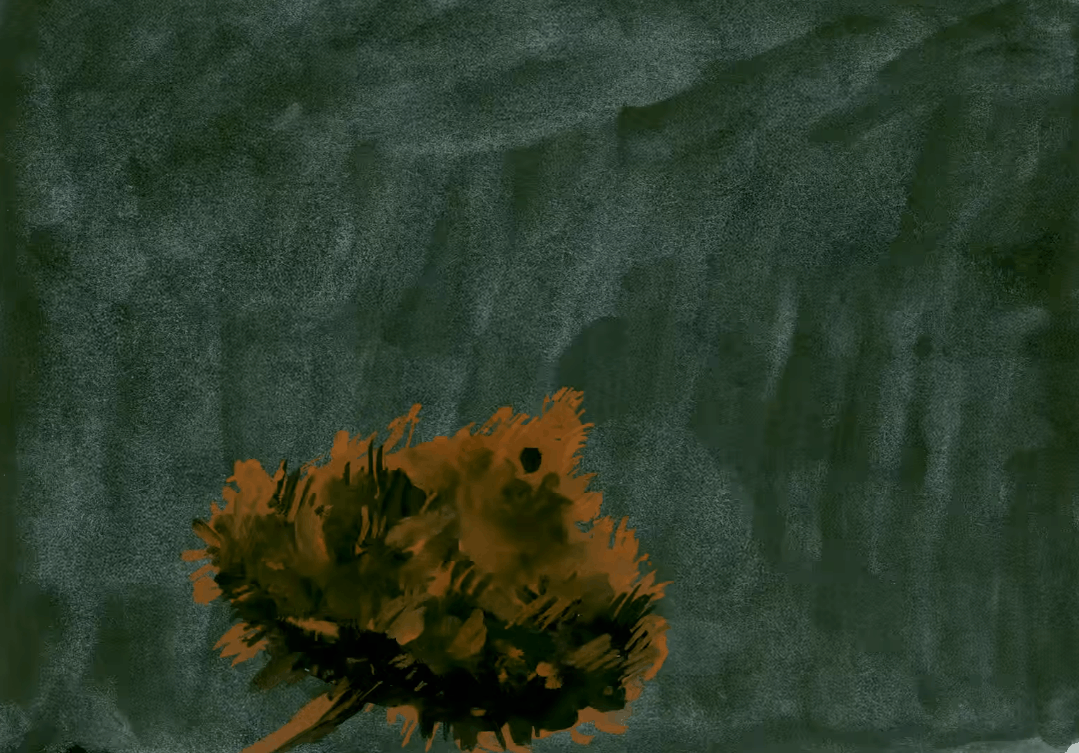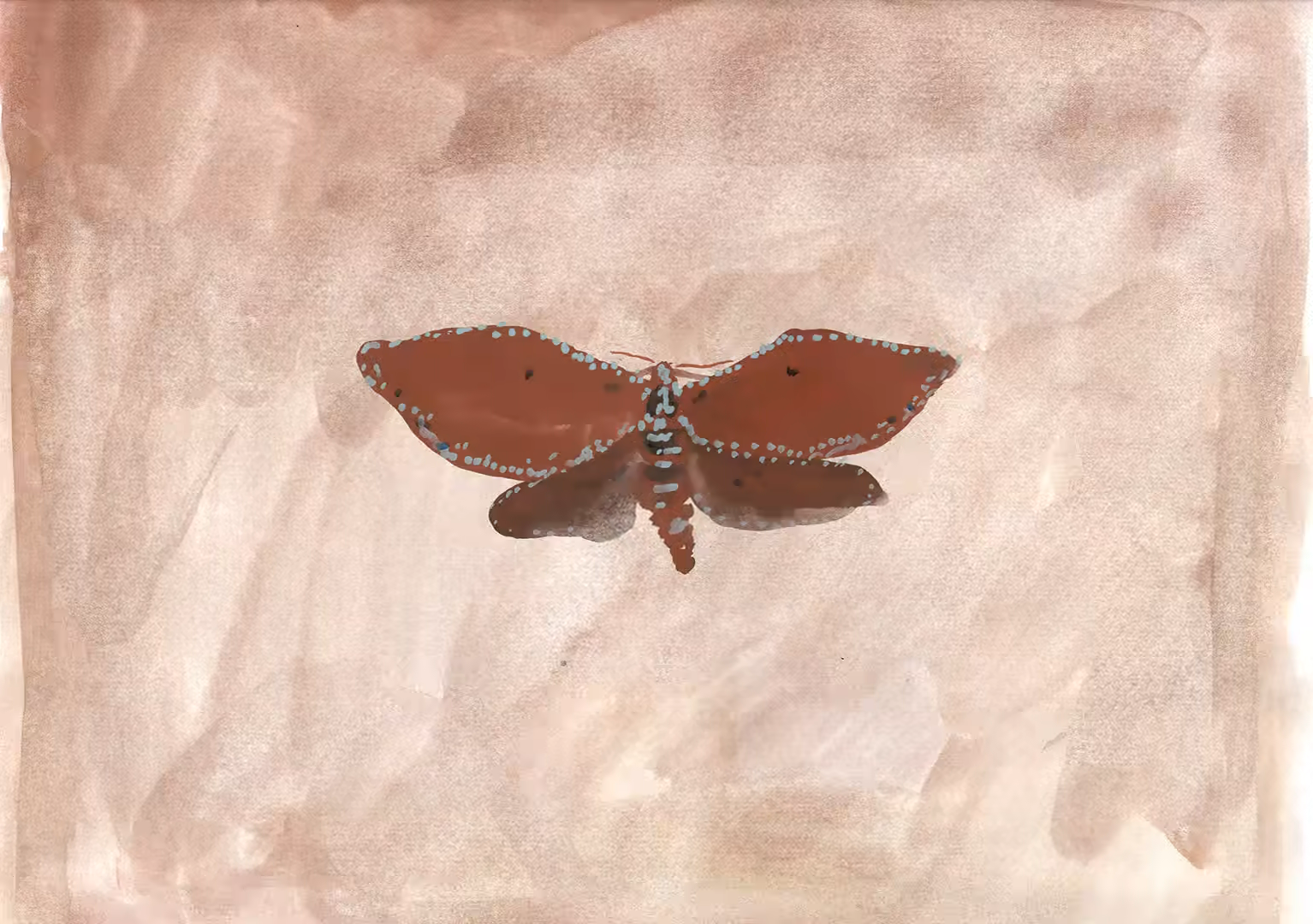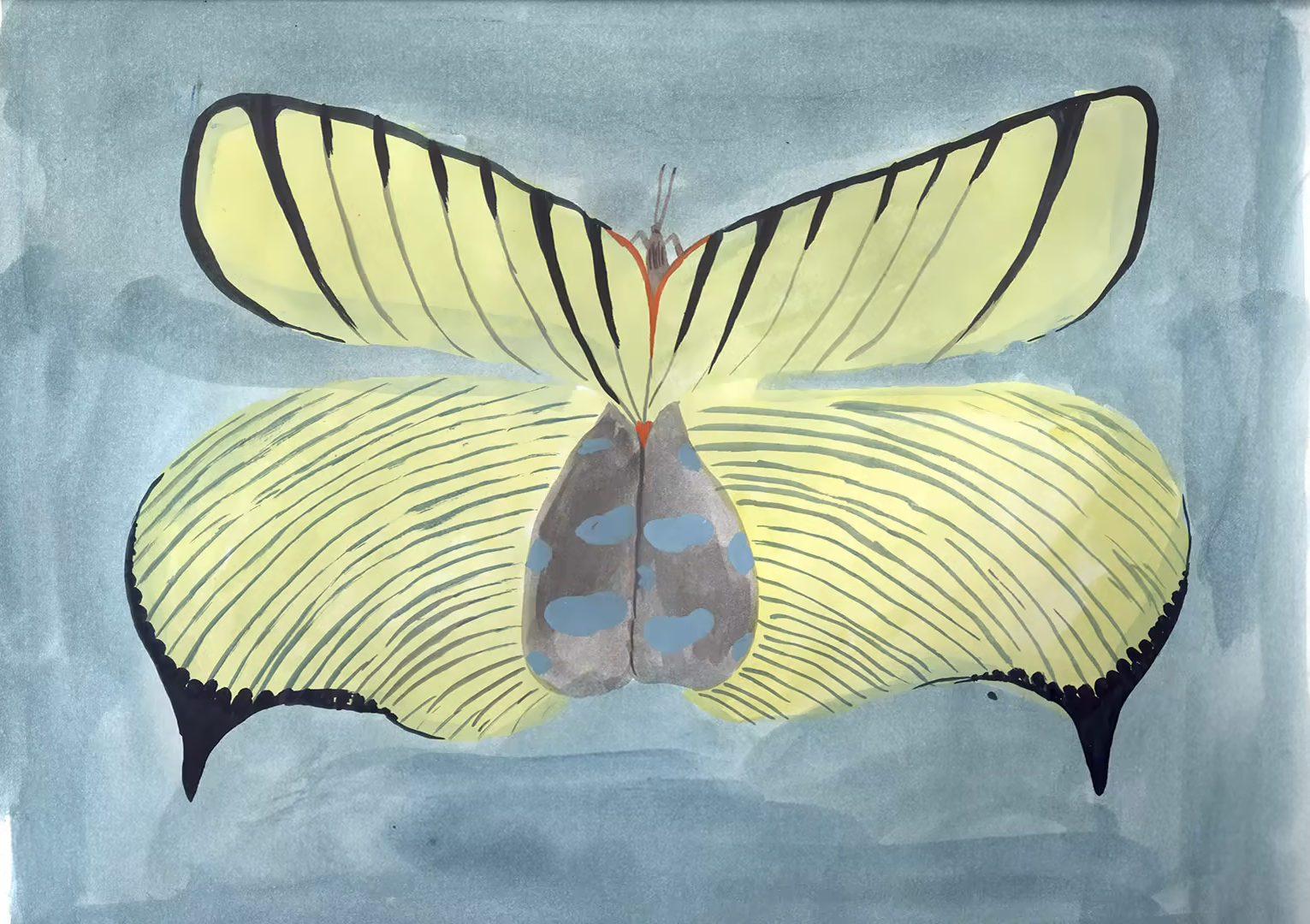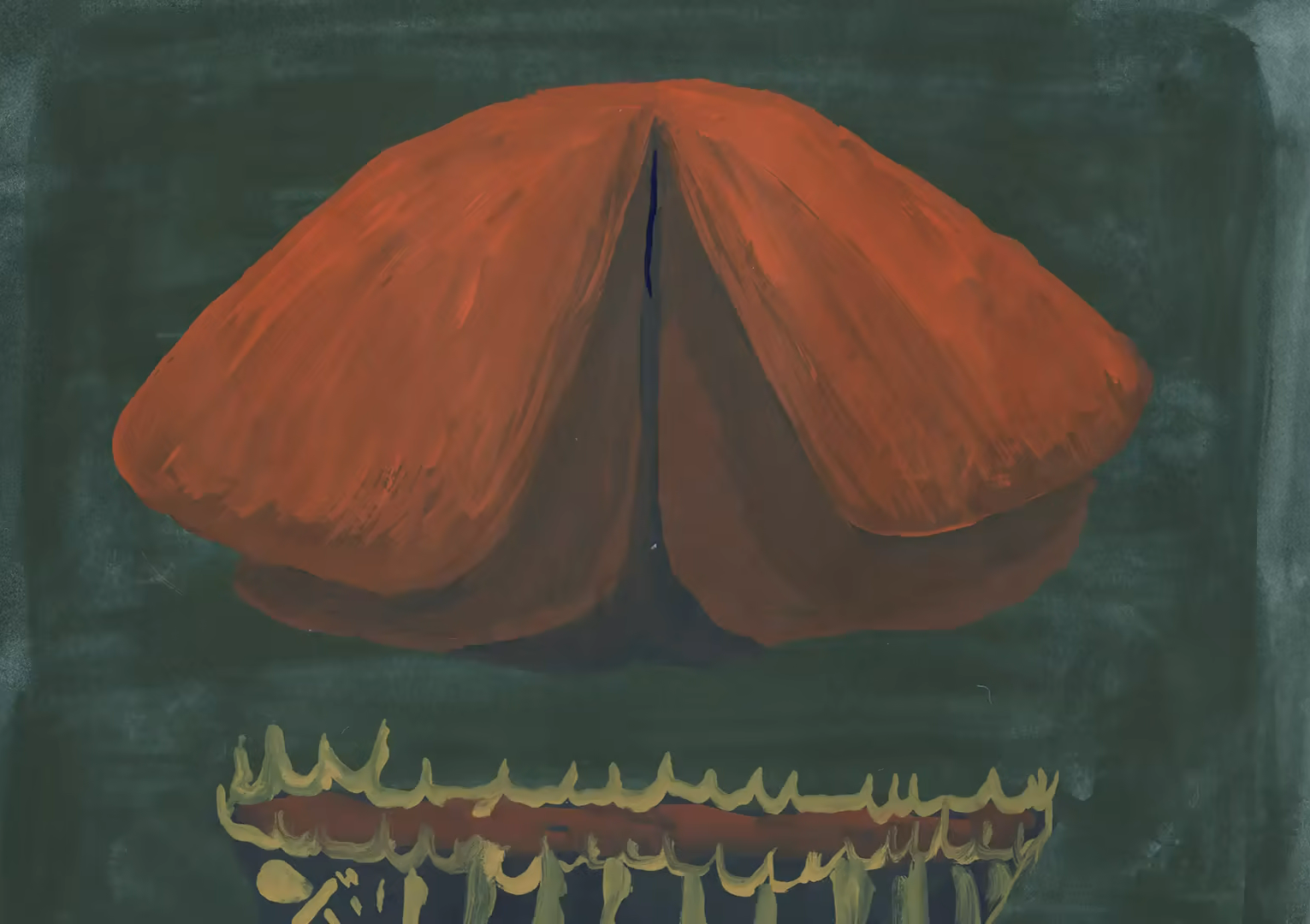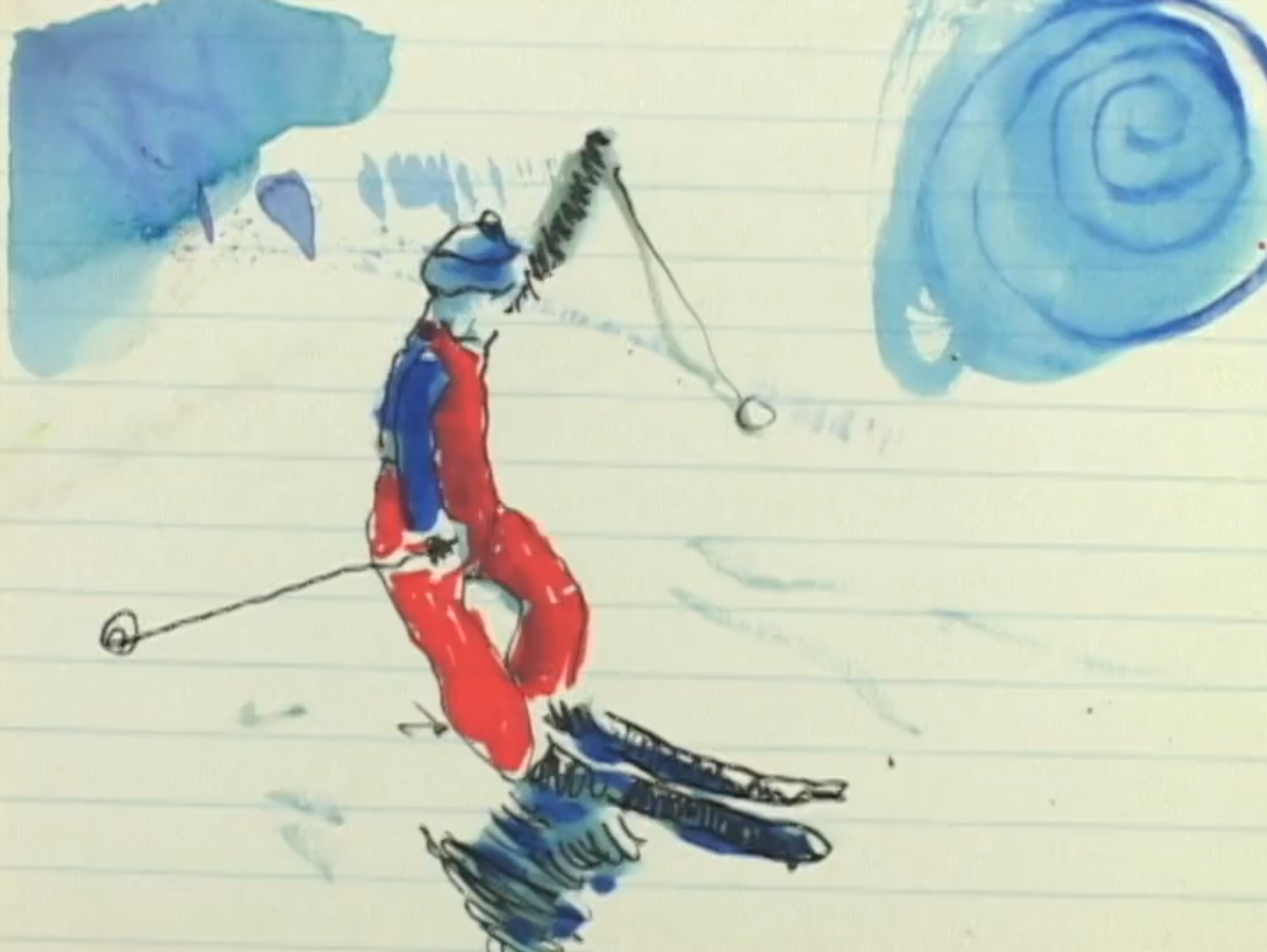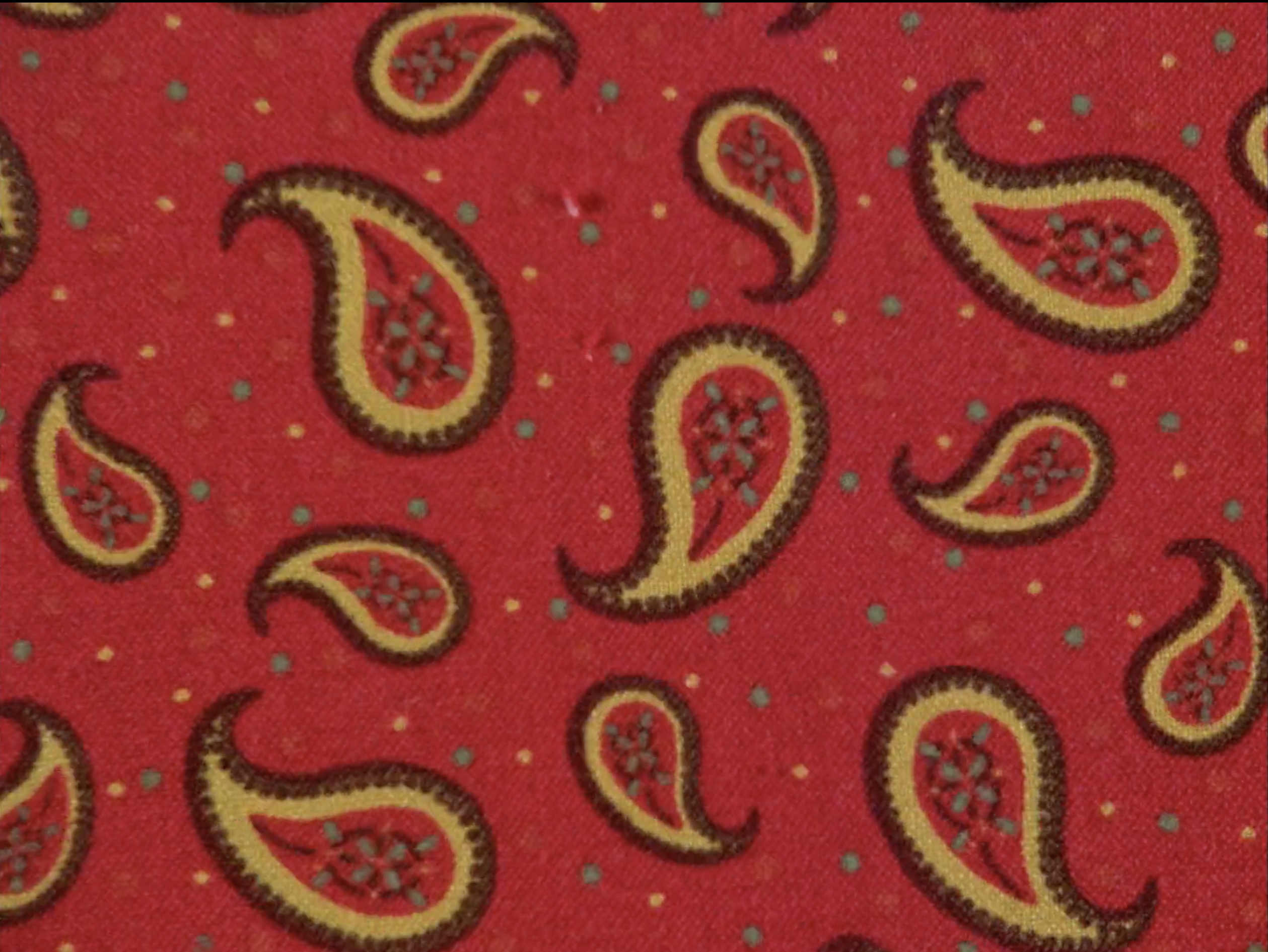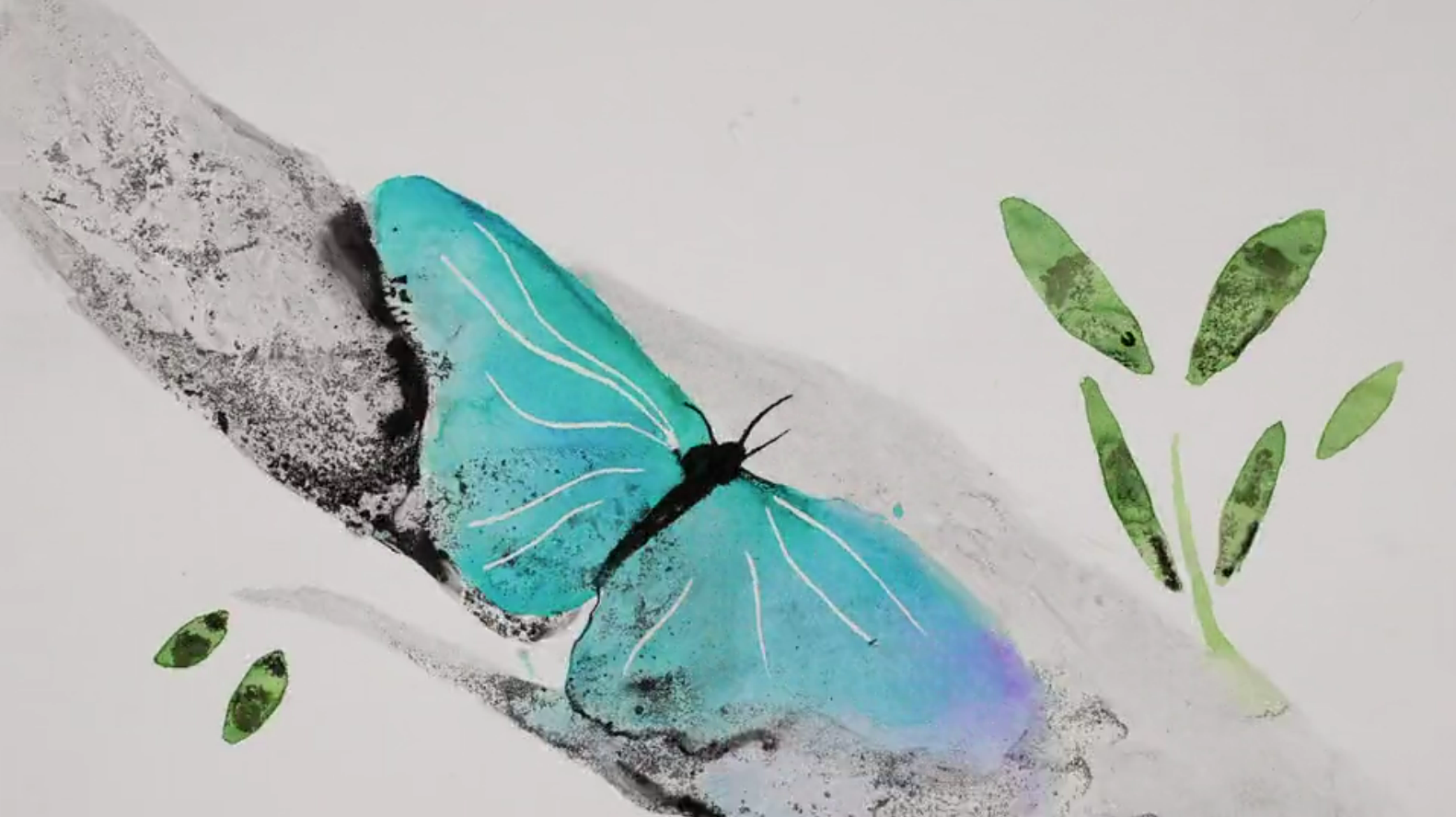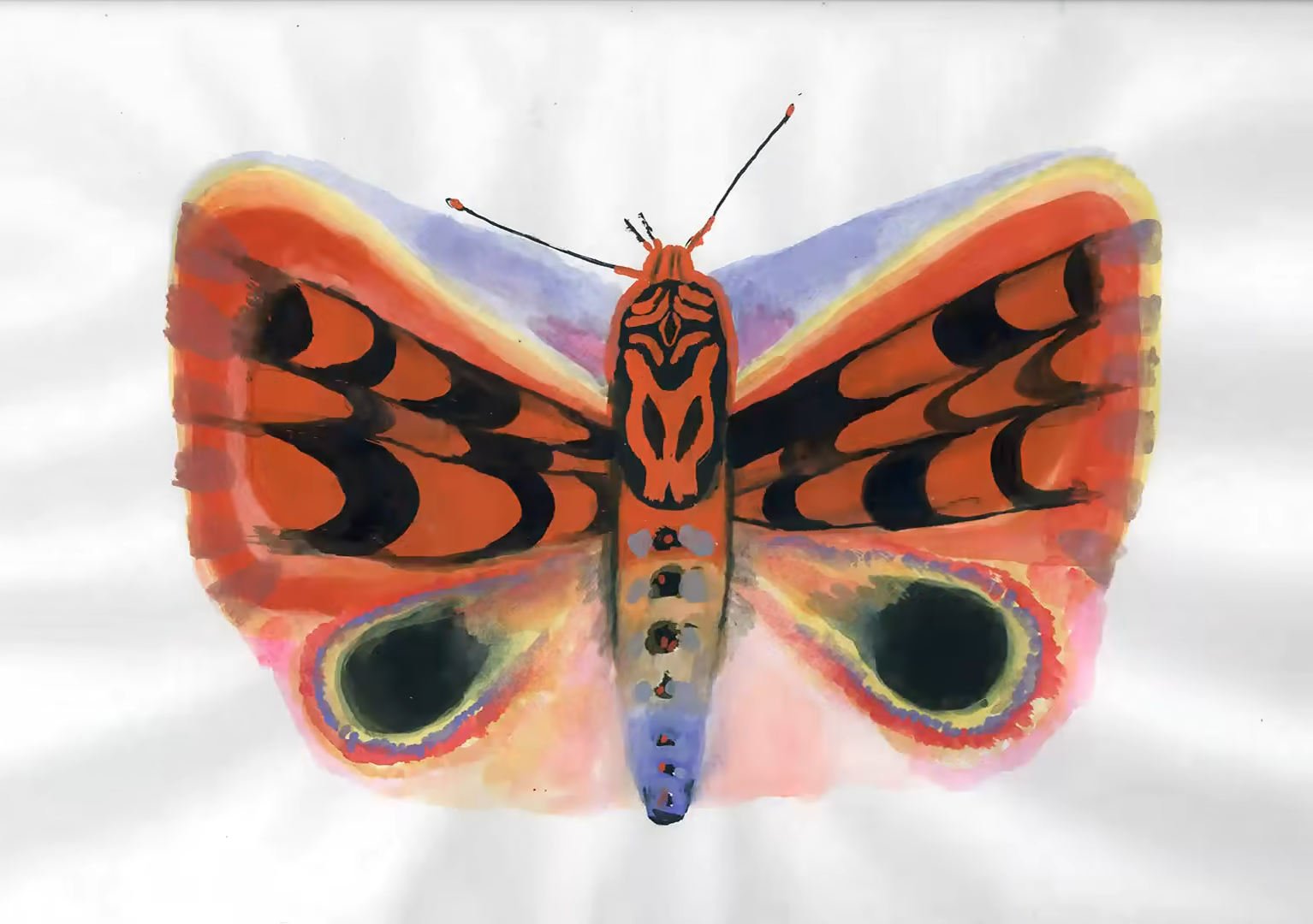
Notes on the film
Using straight-ahead animation with paint on paper, MOTH explores metamorphosis, fertility, decay, and motherhood. The film demonstrates a vast range of gouache qualities, from more translucent watered-down pigment dominating the backgrounds to richly opaque foreground figures and accents. The paper frequently peeks through thick brush strokes or warps lightly under the liquid pigment, creating a boiling effect around the chalky matte figures. Surreal transitions and morphing subjects evoke the sense of a long developing thought or dream.
A variety of painting tools are used to achieve different effects, from thicker background strokes made with larger round or flat brushes to the fine, pointed pen-like details of hairs and veins. Different approaches to gouache are often layered in the same frame, such as when a rounded mushroom with textured shadows and highlights meets the ethereal pointillism of a winged woman.
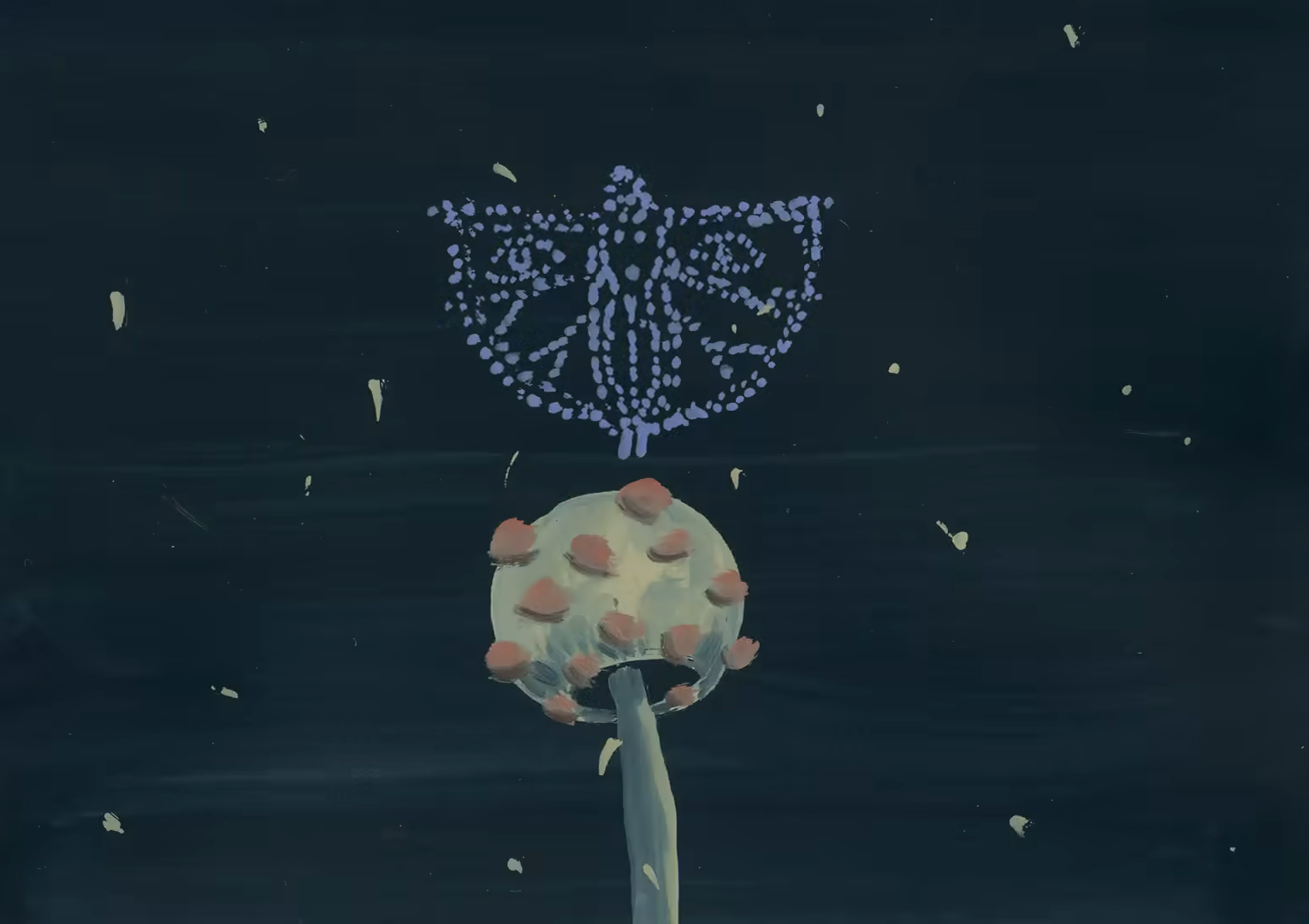
A figure painted with shimmering points alights a mushroom shaded with thicker strokes
MOTH’s return to winged silhouetted creatures evokes the film’s interest in natural cycles and affinities. Set to a string arrangement of Erik Satie’s Gnosienne No. 1, the film’s recurring images of pollination, germination, and decay turn into a bewitching dance. As moths wiggle out of their chrysalises and take flight, the musical score accompanies the push and pull of wings and antennae.
